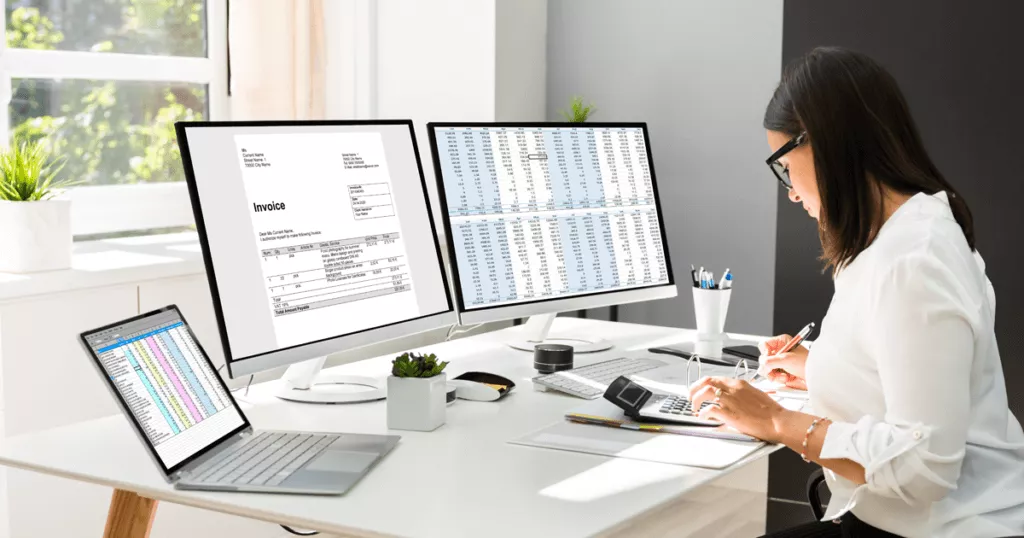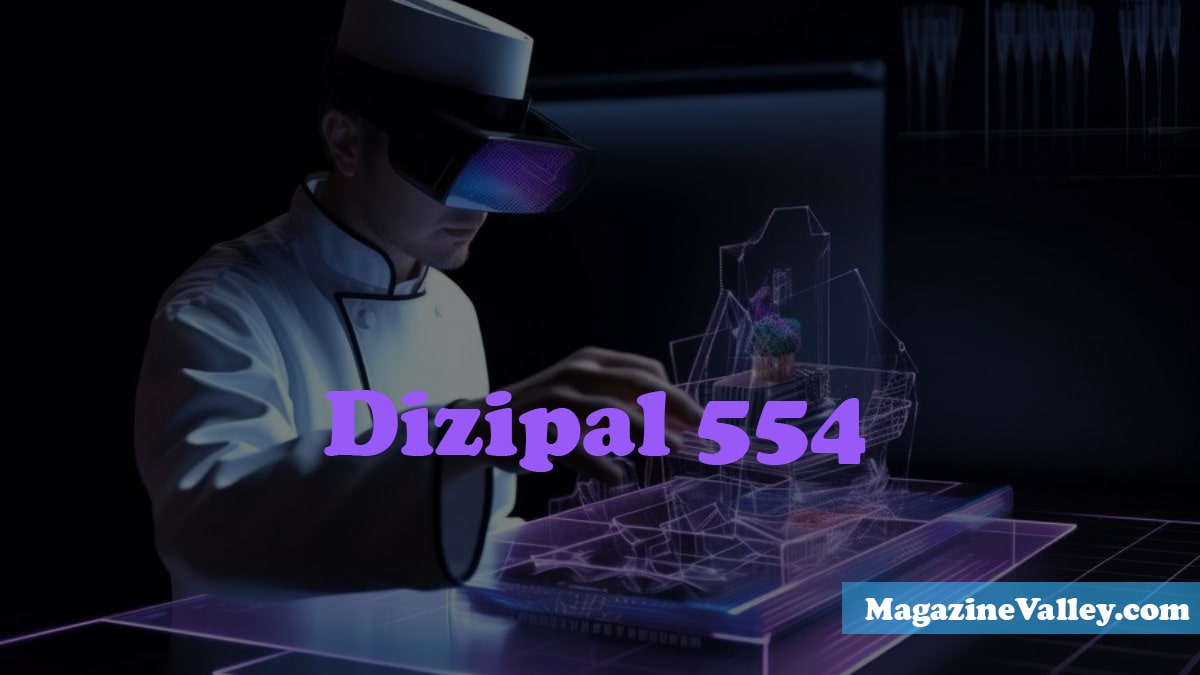Business
How To Design Enticing Custom Boxes For Your Business Growth?

There is a common misconception that customers make purchasing decisions based on wishful thinking. As a matter of fact, instincts drive these decisions. Custom boxes play an instrumental role in their decision-making process. One research suggests most customers only read 5 to 8 words on packaging while making purchases. The question is, what motivates customers to make instant buying decisions?
Great sellers know how to step into customers’ minds before any logic comes their way. They know how to influence the “instinctive decision process” of an average customer. This is the key to the success of big brands: they know how to shape people’s minds. Mainly, it is a certain color, design, or shape of particular packaging that attracts customers’ attention.
Nowadays, many businesses need help with sales. From large enterprises to small startups, the recent covid pandemic impacted businesses of all kinds. Many business owners are looking for strategies that can help their businesses achieve the success they enjoyed in the past. Effective custom packaging can play a huge role in this regard.
Ues Biomotive Triggers
Biomotive Triggers on packaging can help boost your sales because they influence the customer’s subconscious mind. Customers rarely make rational or informed decisions while making a purchase. Market analysts indicate that most customers make decisions based on pure instincts. This is where Biomotive Triggers on packaging come into play.
Packaging experts believe certain graphic elements activate a specific instinctive response in customers. Wise use of Biomotive Triggers on packaging can enhance your product’s commercial success tenfolds.
Chose Branding Elements Wisely
Custom packaging boxes can earn great brand recognition for your brand. Think of custom packaging as a visual pitch to your customers. This is the reason most brands give their logos a center place on their packaging. In addition to a brand logo, there are many other elements that can be added to the packaging. Unique and creative packaging doesn’t only make your customers delightful, but it also adds more value to your product.
Simple Is Better
Beware of adding too many design elements to your packages. It can backfire anytime; therefore, it must be avoided. Customers don’t like too many visual elements on packages. As the saying goes: simple is better. Try to keep your design minimal, simplistic, and elegant at the same time. When it comes to adding the final color to your packages, a single theme will work just fine. Adding too many patterns and colors can irritate the customer.
Maintain Your Brand’s Uniqueness
There are millions of products in the market. Every brand is trying to make its way to end users. But it’s not a plain journey. You need to make tons of effort to make your product noticeable and visible to the masses. Brand identity can help you achieve massive commercial success in the market. It comes from the uniqueness of your custom packaging.
What makes your products unique? The people who work in your brand bring their unique skills and experiences. The product your company offers embodies that uniqueness. Custom product packaging presents a great opportunity to show your brand’s uniqueness to customers.
Typography And Text
Make use of thicker and bolder fonts when adding important elements to custom made Boxes. If you are using white or light fonts on a dark background, make sure you embolden the text. Dark backgrounds tend to create an optical illusion. As a result, the main text body may appear smaller and completely “disappear” in some cases.
If you use corrugated material in packaging, make sure the text size is 10 pt. However, for paperboard material, you have a minimum size limit of 6 pt. It’s noteworthy to state that no matter what font size you use on custom logo boxes, the logo and text should be easily readable.
Rgb Vs. Cmyk – Know The Difference!
Before designing custom packaging boxes for your product, ensure you thoroughly understand the difference between RGB and CMYK.
The color combination on your computer screen comprises red, green, and blue lights (RGB). Regardless of the settings, your computer will always display colors in RGB form.
CMYK, on the other hand, represents Cyan, Magenta, Yellow, and Key (Black) colors. The color combination you see on printed paper is a result of CMYK. Computer files that need to be printed should always be in CMYK form.
RGB colors become duller and less saturated when converted to CMYK. Conversion of RGB to CMYK often gives rise to color shifting. Keep this under consideration while making physical prints of design files. Color shift always happens, and it may disappoint you in the final result. It is advisable to get a sample print before you place a bulk order for custom boxes wholesale.
Conclusion
While designing custom packaging, follow the mantra of “think outside the box.” Custom packaging isn’t just about packaging; it’s an entire marketing strategy on its own. Custom boxes carry your brand’s values. Think of them as a proper communication channel with your customers. Last but not least, the material, shape, and design of custom boxes will add more glance to your final product.
Business
The Rise of Automated Bookkeeping Systems: Transforming Financial Management

In today’s fast-paced business environment, efficiency and accuracy are paramount. As companies strive to streamline operations and reduce costs, automated bookkeeping system is gaining traction. These systems leverage technology to simplify financial management, offering a range of benefits that can significantly enhance the productivity of businesses, both large and small.
Understanding Automated Bookkeeping Systems
Automated bookkeeping systems are software solutions designed to handle a variety of financial tasks, such as tracking income and expenses, invoicing, payroll processing, and generating financial reports. By automating these processes, businesses can minimize human error, save time, and ensure compliance with financial regulations.
At the core of automated bookkeeping is the integration of artificial intelligence (AI) and machine learning technologies. These advancements allow the software to learn from historical data, improving its accuracy over time. Many systems can now even reconcile bank statements automatically, categorize transactions, and send reminders for overdue invoices.
Key Features of Automated Bookkeeping Systems
- Real-Time Data Entry and Reporting: Automated systems allow for real-time updates, ensuring that financial records are always current. This feature enables businesses to make informed decisions based on the latest data.
- Seamless Integration: Many bookkeeping software solutions can integrate with other business tools, such as customer relationship management (CRM) systems, e-commerce platforms, and payment processors. This interoperability allows for a more holistic view of the business’s financial health.
- Expense Tracking: Automated systems can track expenses through features like receipt scanning and expense categorization. This reduces the time spent on manual data entry and ensures that all expenditures are accounted for.
- Invoicing and Payments: Automated invoicing features can generate and send invoices automatically, reducing delays in payment collection. Some systems also offer options for clients to pay online, expediting cash flow.
- Tax Compliance: Automated bookkeeping solutions often come equipped with tools to assist in tax preparation, ensuring that businesses comply with tax regulations and take advantage of available deductions.
Benefits of Implementing Automated Bookkeeping Systems
1. Time Savings
One of the most significant advantages of automated bookkeeping is the time savings it offers. By reducing the time spent on manual data entry and reconciliation, businesses can redirect their focus toward growth and strategic planning.
2. Cost Efficiency
While there may be an initial investment in software, the long-term cost savings are substantial. Businesses can save on labor costs, reduce the likelihood of costly errors, and improve cash flow management. Additionally, the potential for improved tax compliance can prevent penalties and fines.
3. Enhanced Accuracy
Human error is a common issue in traditional bookkeeping. Automated systems minimize mistakes by standardizing data entry processes and using algorithms to check for discrepancies. This leads to more reliable financial data, which is crucial for decision-making.
4. Scalability
As businesses grow, their financial management needs become more complex. Automated bookkeeping systems are often scalable, allowing businesses to upgrade their features or expand their capabilities without a complete overhaul of their financial processes.
5. Improved Financial Insights
With the ability to generate real-time reports and analytics, automated bookkeeping systems provide valuable insights into a business’s financial performance. These insights can help identify trends, track profitability, and inform strategic decisions.
Challenges and Considerations
Despite the numerous advantages, businesses must also be mindful of potential challenges when adopting automated bookkeeping systems. These may include the initial learning curve, data security concerns, and the need for ongoing software updates.
Additionally, while automation can greatly enhance efficiency, businesses need to maintain a level of oversight. Regular audits and human review of financial data are still essential to ensure accuracy and compliance.
Conclusion
The shift toward automated bookkeeping systems is revolutionizing the way businesses manage their finances. By harnessing the power of technology, companies can achieve greater efficiency, accuracy, and insight into their financial operations. As the business landscape continues to evolve, investing in automated bookkeeping solutions is no longer just an option; it’s a necessity for those looking to stay competitive. Embracing this technology not only simplifies financial management but also paves the way for informed decision-making and sustained growth in an increasingly complex marketplace.
Business
A Comprehensive Guide to the Dizipal 554

Introduction to the Dizipal 554
Welcome to the ultimate guide on the Dizipal 554, your go-to solution for all your needs! If you’re looking for a versatile and reliable tool to simplify your daily tasks, the Dizipal 554 is here to make a difference. Let’s dive into the history, features, uses, and more of this innovative product that is set to revolutionize how you approach your day-to-day activities.
History and Evolution of the Dizipal 554
The Dizipal 554 has a fascinating history that dates back to its inception in the early 2000s. Originally designed as a compact and versatile tool for professionals, it quickly gained popularity for its innovative features and reliability.
Over the years, the Dizipal 554 has evolved to meet the changing needs of users in various industries. From enhancements in performance to updates in technology, each iteration of the device has been meticulously crafted to ensure maximum efficiency and user satisfaction.
As advancements in design and functionality continue to shape the landscape of portable devices, the Dizipal 554 remains at the forefront of innovation. Its rich history and continuous evolution make it a trusted companion for individuals seeking quality, durability, and cutting-edge technology in one sleek package.
Features and Specifications
The Dizipal 554 is a versatile and innovative device packed with impressive features that cater to various needs.
Equipped with a high-definition display, the Dizipal 554 offers crystal-clear visuals for an enhanced user experience. Its sleek design and lightweight build make it portable and convenient to carry around.
With multiple connectivity options, such as Bluetooth and Wi-Fi, the Dizipal 554 ensures seamless integration with other devices for effortless data transfer. The powerful processor ensures smooth performance even when running multiple applications simultaneously.
Furthermore, the Dizipal 554’s long battery life guarantees uninterrupted usage throughout the day. Its expandable storage capacity allows users to store large amounts of data without worrying about running out of space.
The Dizipal 554 stands out for its cutting-edge features and specifications, making it a top choice for tech-savvy individuals looking for reliability and functionality in one device.
Benefits and Uses of the Dizipal 554
The Dizipal 554 offers a range of benefits and versatile uses that cater to various needs. One key advantage is its compact design, making it easy to carry around for on-the-go tasks. Whether you’re a student, professional, or traveller, the Dizipal 554 can be your reliable companion.
With its advanced features like multiple compartments and secure zippers, this organizer ensures optimal organization and protection for your belongings. From storing stationery items to keeping electronic gadgets safe, the Dizipal 554 excels in functionality.
Moreover, the Dizipal 554’s durable material enhances its longevity, providing long-lasting utility for daily use. Its stylish appearance also adds a touch of sophistication to your accessories collection.
The Dizipal 554’s benefits and uses make it a practical investment for anyone seeking convenience and style in their organizational essentials.
Comparison with Similar Products
When compared to similar products on the market, the Dizipal 554’s standout features truly set it apart. One key difference is its advanced technology, which ensures precise results every time. Unlike other models, the Dizipal 554 offers unparalleled accuracy and efficiency in its performance.
Moreover, when considering user feedback and reviews, the Dizipal 554 consistently receives high praise for its reliability and durability. Customers appreciate the product’s longevity and how it delivers exceptional results even after prolonged use.
Regarding design and ergonomics, the Dizipal 554 excels with its user-friendly interface and intuitive controls. It provides a seamless experience for both professionals and beginners alike, making it a top choice among consumers seeking quality and convenience in one package.
When compared to similar products in its category, the Dizipal 554 emerges as a clear frontrunner due to its superior performance, durability, and ease of use.
Customer Reviews and Satisfaction
Customer reviews and satisfaction play a crucial role in determining the success of any product, including the Dizipal 554. Many users have expressed their delight with the device, praising its efficiency and user-friendly interface. Some customers have highlighted how the Dizipal 554 has simplified their daily tasks and enhanced their productivity. Users appreciate the device’s high-quality construction, making it durable for long-term use.
Positive feedback regarding the excellent customer service provided by Dizipal has also been noted by many customers. The prompt assistance and support offered have left a lasting impression on users, further solidifying their satisfaction with the product. Customer reviews reflect high satisfaction with the Dizipal 554, making it a popular choice among individuals seeking an advanced organizational tool.
How to Use the Dizipal 554
Using the Dizipal 554 is straightforward and can enhance your daily routines. Start by familiarizing yourself with the device’s buttons and functions. To power it on, simply press the designated button until the screen lights up.
The user-friendly interface effortlessly navigates through different modes. You can customize settings such as brightness and volume to suit your preferences. The Dizipal 554 offers various features like alarms, timers, and a temperature display for added convenience.
To set an alarm, press the alarm button and adjust the time using the arrow keys. You can also utilize the device’s timer function by selecting the desired duration. The compact size makes it portable for travel or everyday use in different rooms of your home.
Explore all functionalities to fully maximize this versatile gadget in organizing your schedule effectively.
Maintenance and Care Tips
Maintenance and care tips for the Dizipal 554 are essential to ensure its longevity and optimal performance. To keep your device in top condition, it is recommended to regularly clean the exterior with a soft, dry cloth to remove dust and dirt buildup. Avoid using harsh chemicals or abrasive materials that could damage the device’s surface.
For proper maintenance, make sure to store the Dizipal 554 in a cool, dry place away from direct sunlight and extreme temperatures. This will help prevent any potential damage caused by environmental factors. Additionally, be gentle when handling the device to avoid accidental drops or impacts that could lead to malfunctions.
Regularly check the battery status of your Dizipal 554 and charge it as needed to maintain its functionality. Updating your device’s software when new versions are released is also advisable to ensure smooth operation and access to additional features. By following these simple maintenance tips, you can enjoy uninterrupted use of your Dizipal 554 for years to come.
Where to Purchase the Dizipal 554
Looking to get your hands on the versatile Dizipal 554? You can easily find this innovative product online and in stores at select retailers.
Online platforms like Amazon, eBay, and the official Dizipal website offer a convenient way to purchase the Dizipal 554 from the comfort of your home. These websites often provide detailed product descriptions and customer reviews to help you make an informed decision.
If you prefer to see the product in person before purchasing, check out electronic stores or speciality shops that carry tech gadgets. Don’t forget to inquire about any ongoing promotions or discounts that could save you some money on your Dizipal 554.
No matter where you choose to buy it, ensure that you purchase from authorized sellers to guarantee authenticity and quality. Happy shopping for your new favourite gadget!
Conclusion
The Dizipal 554 is a versatile and reliable tool that has made its mark in the market. With its innovative features, durability, and ease of use, it stands out as a top choice for professionals and DIY enthusiasts alike. Whether you need precision cutting or efficient crimping, the Dizipal 554 delivers on all fronts.
Business
The Irresistible Appeal of Beach House Plans

Imagine waking up to the gentle sound of waves crashing on the shore, stepping out onto a sunlit deck, and feeling the salty breeze on your face. This dream is a reality for those who choose to build or buy a beach house. Beach house plans offer more than just a place to live; they provide a lifestyle filled with relaxation, natural beauty, and a sense of escape from the hustle and bustle of everyday life. Let’s delve into the unique appeal of beach house plans and why they continue to captivate homeowners.
Embracing Coastal Living
Beach house plans designed by Monster House Plans are created to maximize the benefits of coastal living. From expansive windows that capture stunning ocean views to spacious decks that offer the perfect spot for outdoor dining and relaxation, these homes are all about embracing the beauty of the seaside. The layout of beach houses often includes open-concept living areas that allow for easy flow between indoor and outdoor spaces, creating a seamless connection with nature.
Natural Light and Airy Spaces
One of the most appealing aspects of beach house plans is the abundance of natural light. Large windows, sliding glass doors, and skylights are common features that flood the interior with sunlight, creating bright and inviting spaces. High ceilings and open floor plans further enhance the airy feel, making beach houses perfect for those who crave a light and spacious environment.
Outdoor Living
Beach house plans prioritize outdoor living, with features like wraparound porches, multi-level decks, and rooftop terraces. These outdoor spaces provide ample room for entertaining, relaxing, and enjoying the scenic surroundings. Whether it’s a morning coffee with a sunrise view, a barbecue with friends, or a quiet evening under the stars, the outdoor living areas of a beach house offer endless possibilities for enjoyment.
Casual and Comfortable Interiors
The interior design of beach houses often reflects the laid-back vibe of coastal living. Think comfortable, casual furnishings, natural materials like wood and stone, and a color palette inspired by the sea and sky. Beach house plans typically include cozy nooks, inviting living areas, and functional spaces that encourage relaxation and easy living. The emphasis is on creating a comfortable and welcoming atmosphere where family and friends can gather and unwind.
Proximity to Nature
Living in a beach house means being close to nature, with easy access to the sand, sea, and sky. Beach house plans often include features that enhance this connection, such as outdoor showers for rinsing off after a day at the beach, large windows that frame breathtaking views, and landscaping that blends seamlessly with the natural surroundings. This proximity to nature promotes a healthy and active lifestyle, encouraging outdoor activities like swimming, surfing, beachcombing, and more.
A Sense of Escape
For many, a beach house represents the ultimate escape from the stresses of everyday life. The tranquil sound of the ocean, the fresh sea air, and the slower pace of coastal living create a serene environment that allows for true relaxation. Beach house plans are designed to enhance this sense of escape with features that prioritize comfort, privacy, and a connection to the natural world.
Investment Potential
In addition to their lifestyle benefits, beach houses can also be a smart investment. Properties in desirable coastal locations often appreciate value over time, and beach houses can generate rental income when not used. This dual appeal of personal enjoyment and financial gain makes beach house plans attractive for many homeowners.
Timeless Appeal
The appeal of beach house plans is timeless. Whether it’s a charming cottage by the shore or a modern beachfront villa, the allure of living by the sea never fades. The design elements that define beach houses – from their emphasis on natural light and outdoor living to their casual and comfortable interiors – create a living space that feels both luxurious and relaxed.
Conclusion
Beach house plans offer a unique blend of natural beauty, relaxed living, and timeless appeal. They provide a lifestyle that prioritizes comfort, connection to nature, and a sense of escape, making them an ideal choice for those who dream of coastal living. Whether you’re looking for a vacation retreat or a permanent residence, a beach house plan can turn your seaside dreams into reality.
-

 Travel2 years ago
Travel2 years agoNEW ZEALAND VISA FOR ISRAELI AND NORWEGIAN CITIZENS
-

 Uncategorized2 years ago
Uncategorized2 years agoAMERICAN VISA FOR NORWEGIAN AND JAPANESE CITIZENS
-

 Health2 years ago
Health2 years agoHealth Benefits Of Watermelon
-

 Lifestyle1 year ago
Lifestyle1 year agoThese Easy, Affordable Improvements Can Completely Transform Your Home
-

 Technology1 month ago
Technology1 month agoImagine a World Transformed by Technology and Innovation of 2023-1954
-

 Lifestyle2 months ago
Lifestyle2 months agoThe Role of Door-to-Door Apps in Voter Engagement
-
Home Improvement9 months ago
11 Amazing Insights into Home Decor Gifts – Elevate Your Gifting Game
-

 Business2 months ago
Business2 months agoMetaphysical Stores Near Me





